For Big Board Gaming, here are some photos of a recent playtest of the Battle of Plataea 479 BC, from Hoplite.
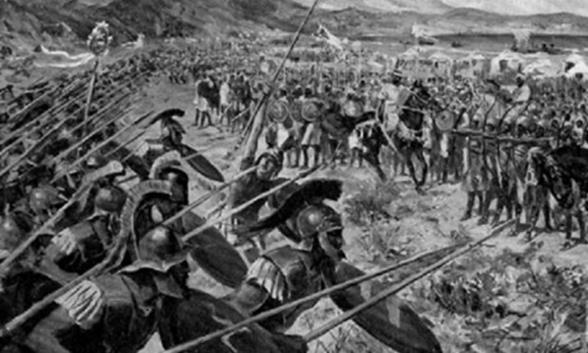
Historical Background.
Following the Persian victory at the Battle of Thermopylae and the Greek victory at the naval Battle of Salamis in 480 BC, Greek forces continued to hold out in the Peloponnese. The Persian King Xerxes returned home, leaving a large army under the command of Mardonius. In the summer of 479 BC, a coalition of Greek city-states launched a counter-offensive by land and sea. While a Greek fleet sailed to Samos to destroy the remnants of the Persian navy, the Greek coalition assembled an army of about 50,000 to confront a Persian army of around 75,000 under the command of Mardonius in central Greece at the Battle of Plataea.
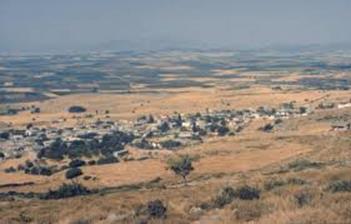
(Brendan says:) I should point out that in some photos you’ll notice two cohesion markers on some Hoplite Phalanx units, even before a Hoplite unit is within range of enemy archers. Hoplite has a new game mechanic whereby Hoplite units may break into a run when they come in sight of the enemy at a certain range. If a Hoplite units breaks into a run, it may incur hits for doing so, as well as terrain hits. As we don’t yet have markers to indicate the rate of a Hoplite unit’s movement, we’ve been using inverted cohesion hit markers (‘inverted’ from the perspective of the owning player) to indicate rate of movement, which is either ‘3’, ‘4’ or ‘5’.
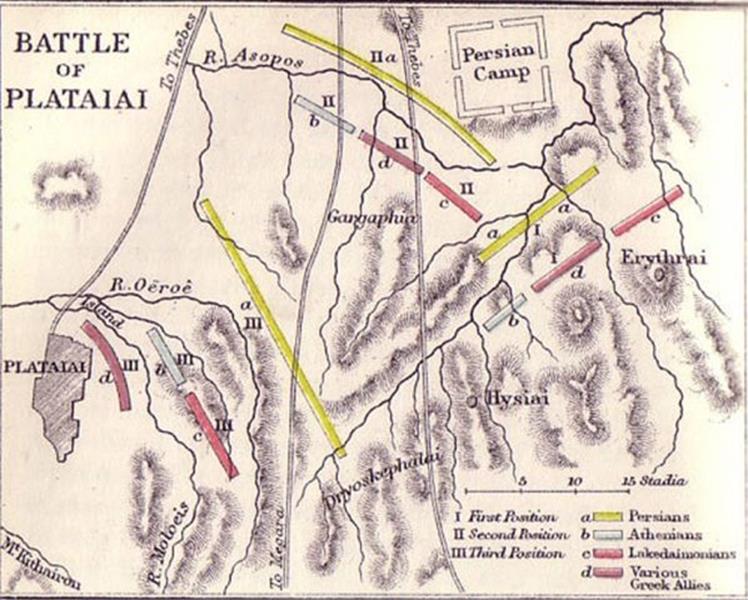
This a playtest of one of the two Plataea scenarios in Hoplite.
Plataea is the biggest scenario in the whole GBoH series.
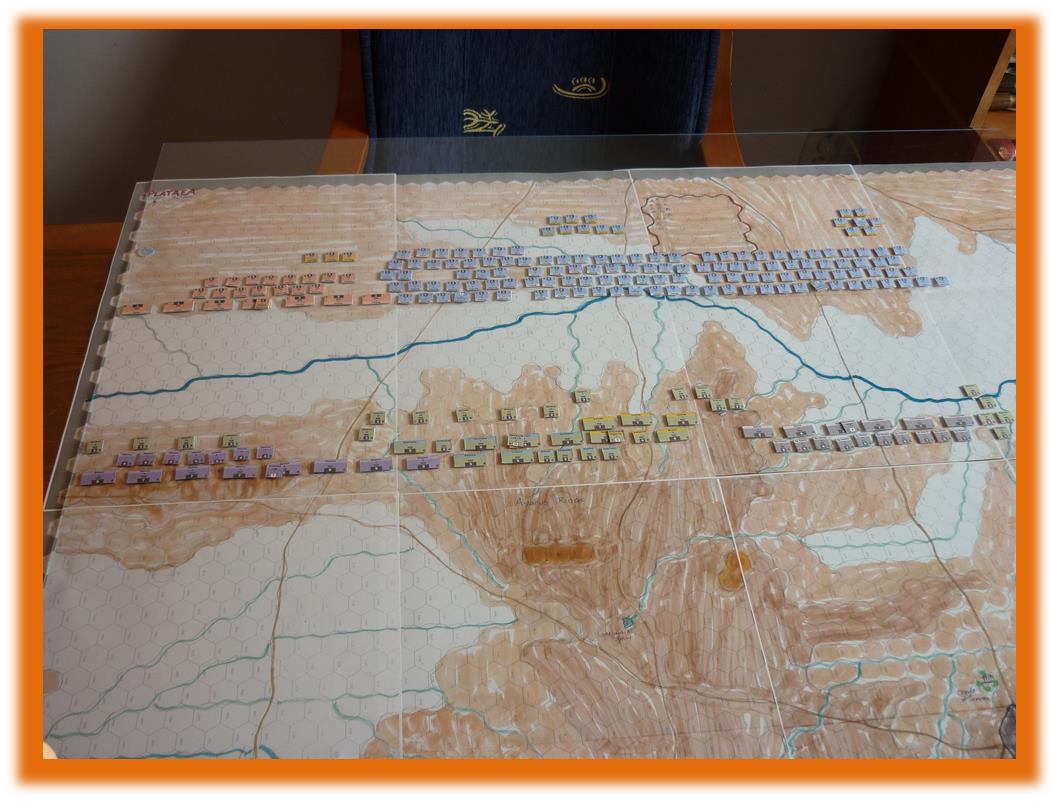
Set up as seen from behind the Greek army. Athenians on the left, Spartans on the right, other Greek city state allies in the centre.
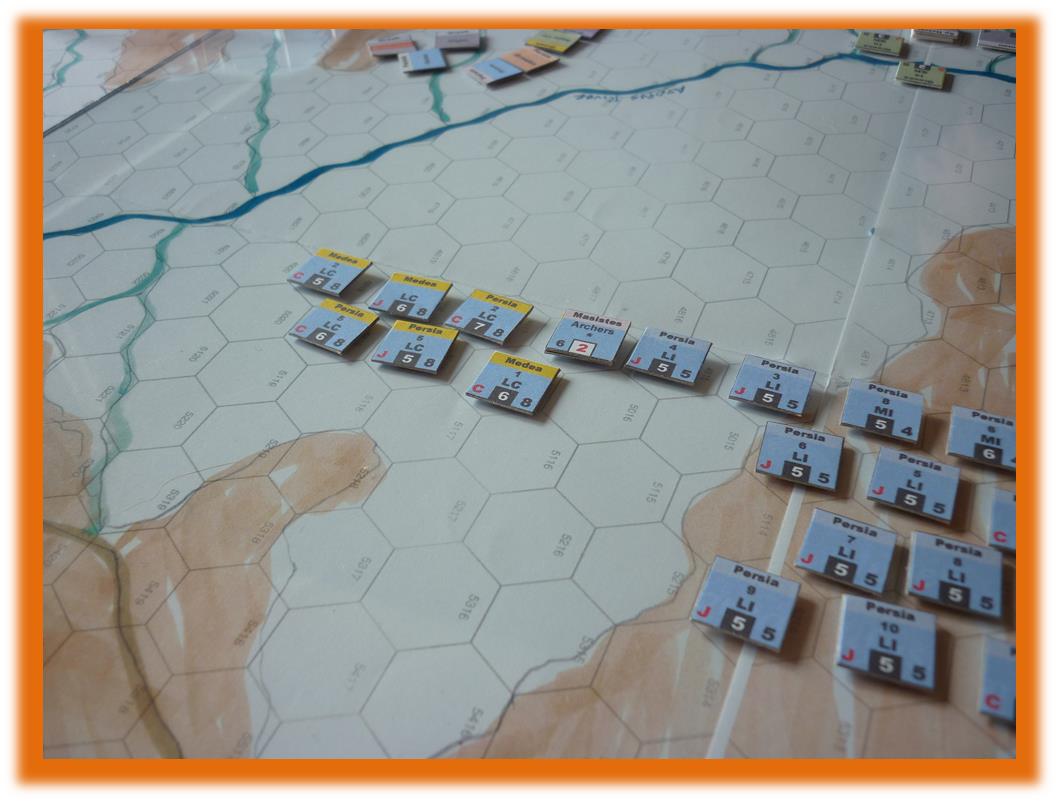
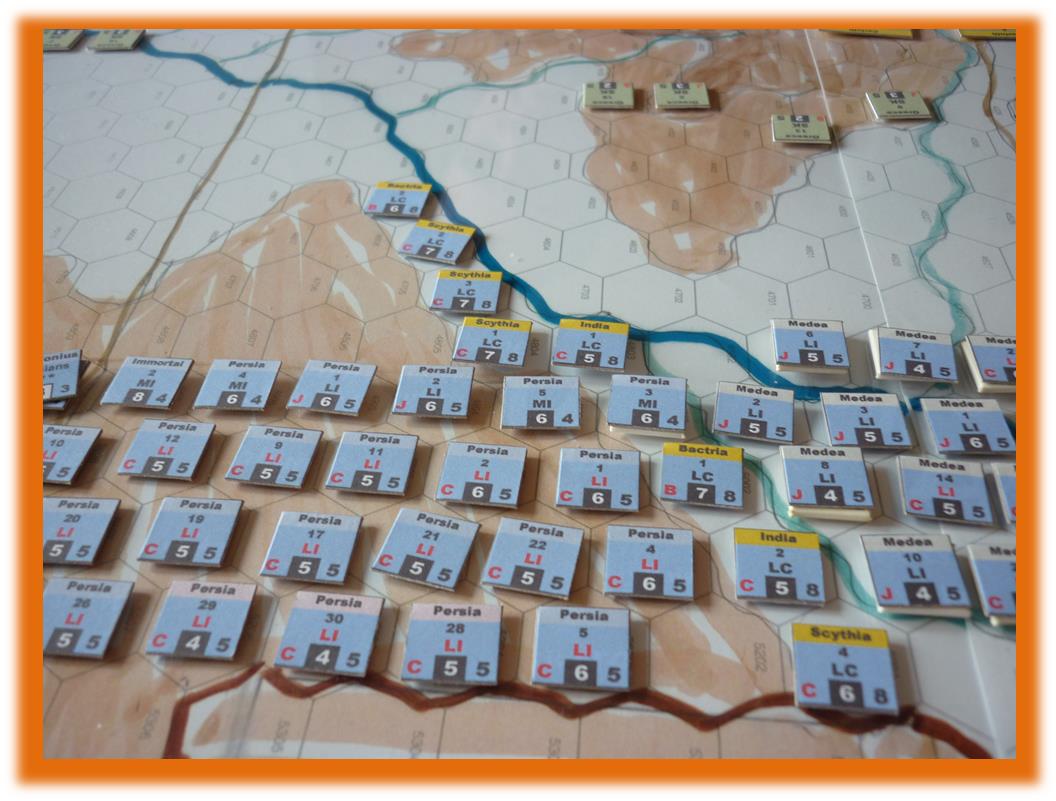
Persian cavalry form up on the left wing and in the centre other Persian cavalry move through their own units.
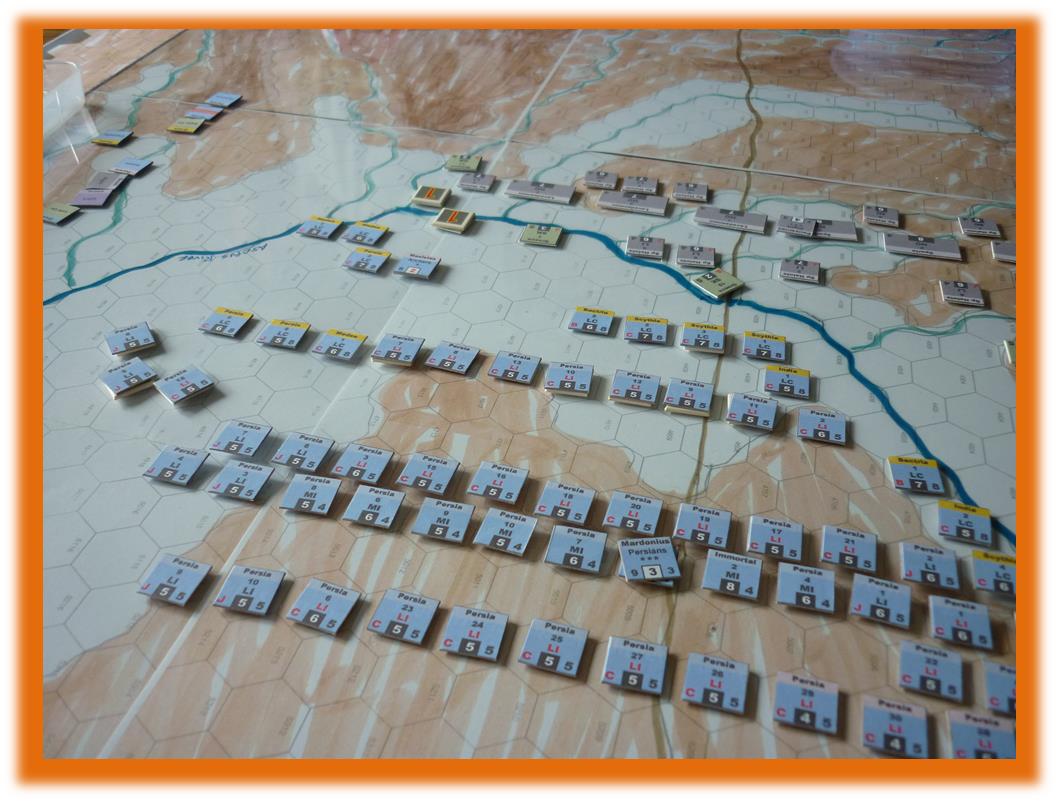
The first arrows volleys hit their targets, fired from Persian light cavalry on the left.
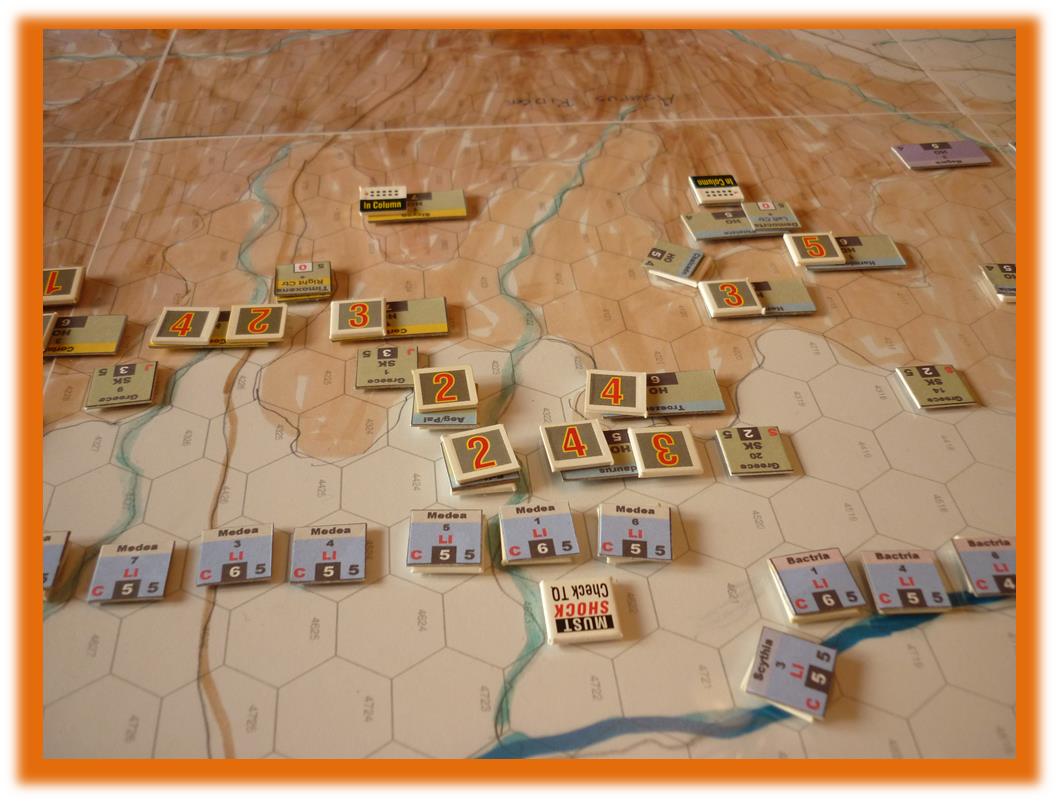
The first shock combat, as Hoplite Phalanxes from the Greek city state allies, crash into Persian light infantry equipped with composite bows. The Hoplite Phalanxes have hits from movement through terrain and possibly if they’ve been running (‘inverted’ hit markers indicate movement rate – not cohesion hits).
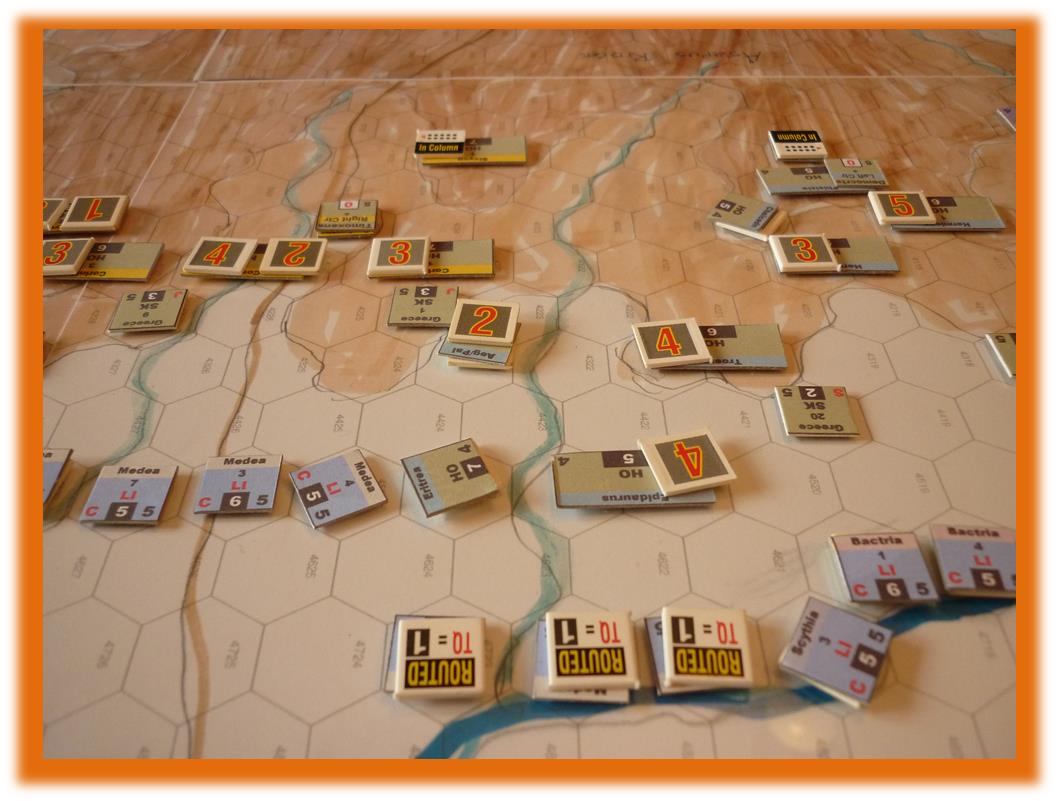
And the result!
Middle game
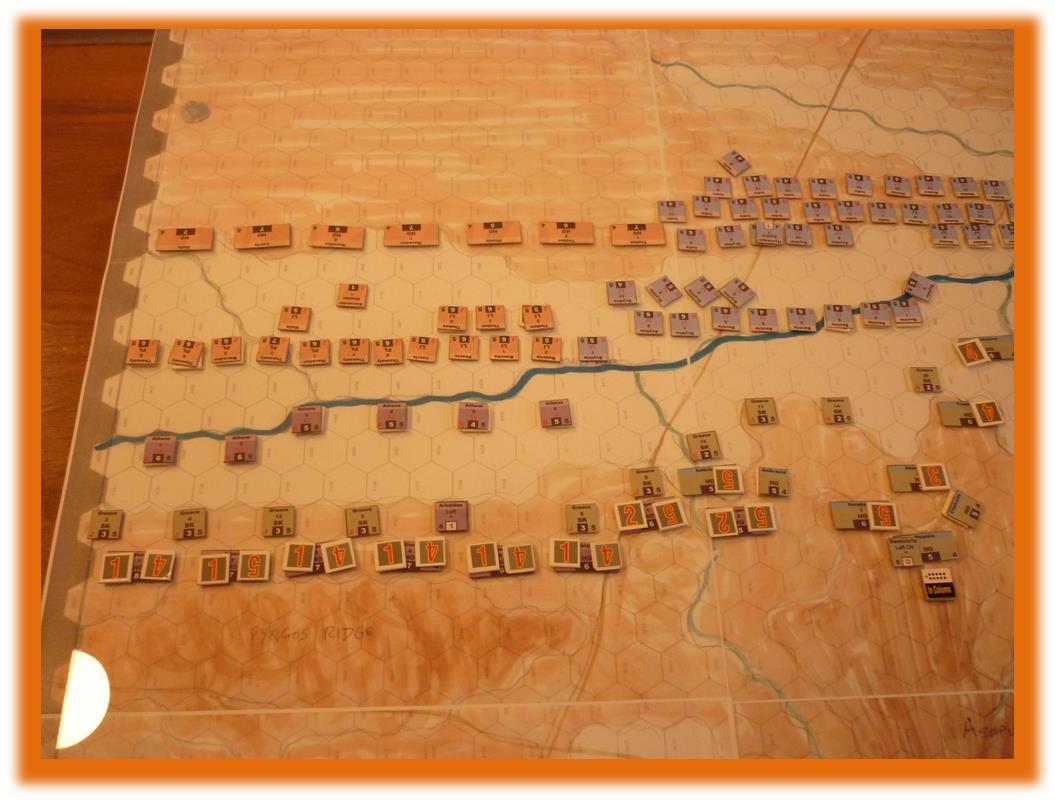
The Athenians on the Greek left
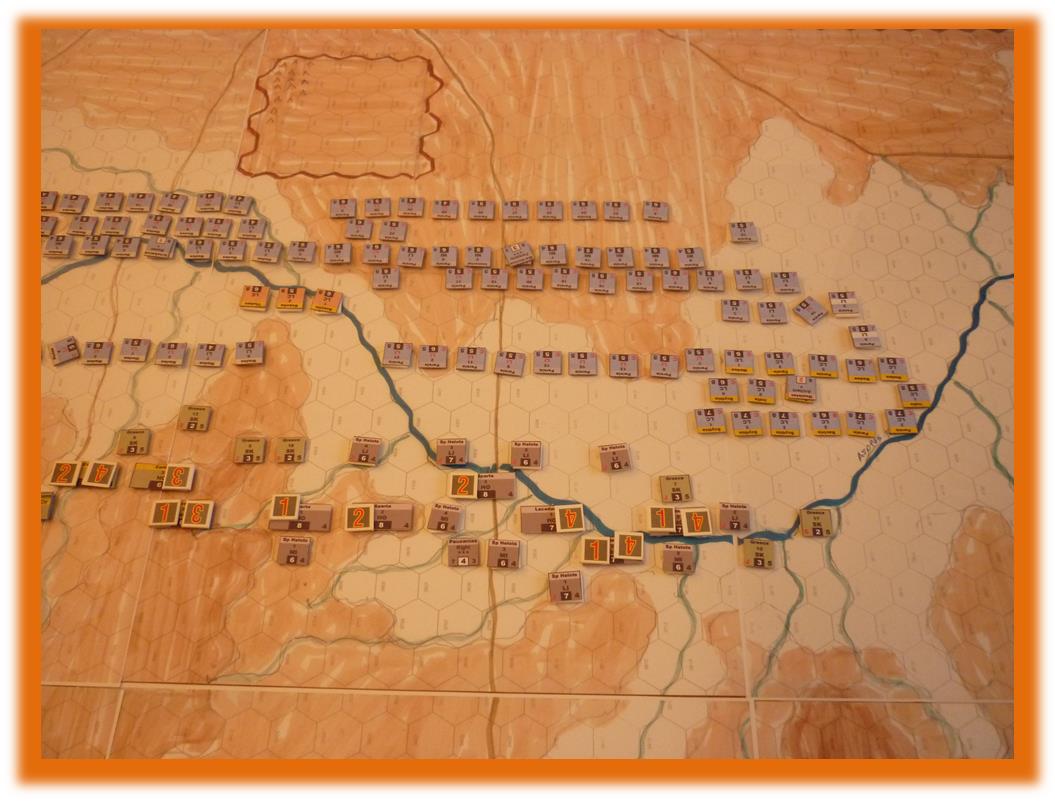
The Spartans on the Greek right, with the Persian cavalry massing on their left
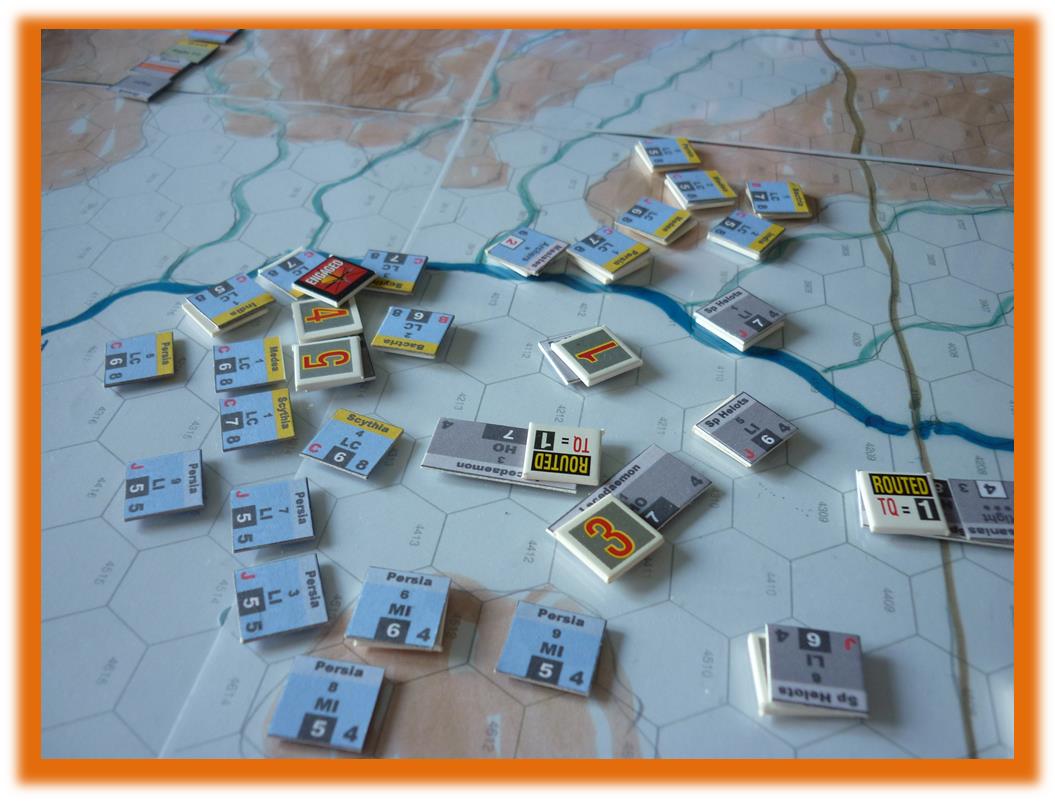
The Persian cavalry swarms around the Spartans on the Greek right.
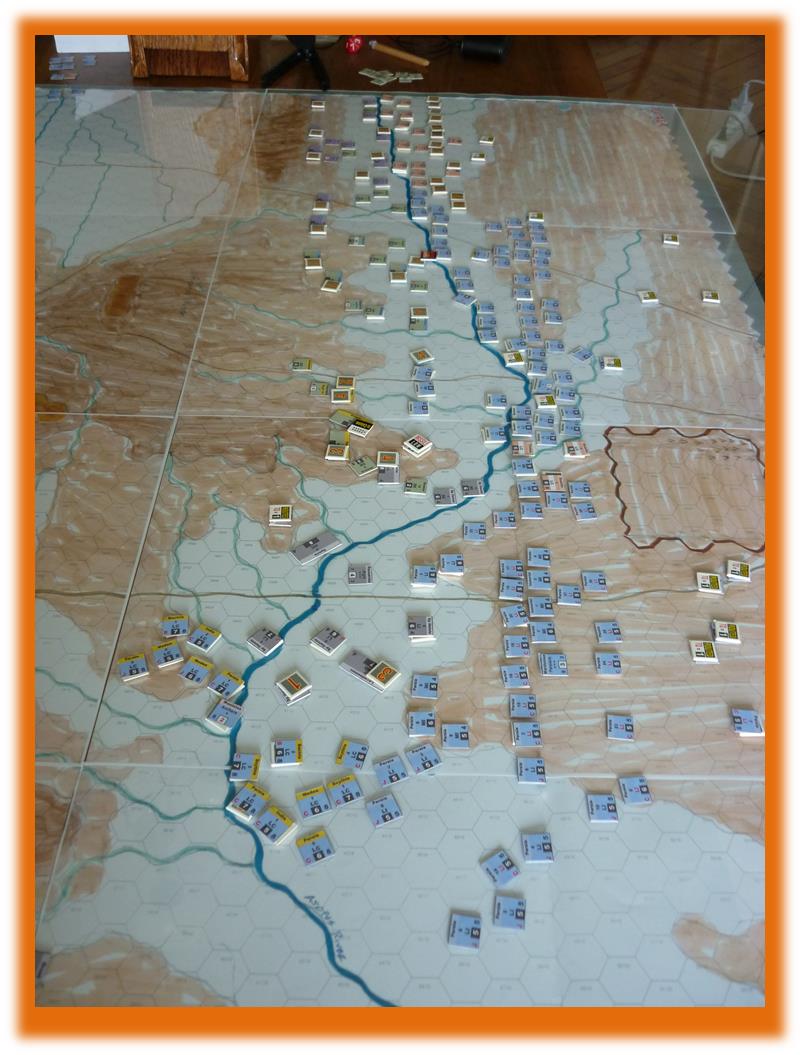
Photo 1010747: The End at the beginning of turn 6, when the Greek player resigned.
At that point, the Greeks had amassed 136 Rout Points in losses, out of 200.
By then, the Persians had lost 59 RPs, out of 265.
The reason for the Greek player’s resignation was the disintegration of his Spartan contingent, assailed by a concentration of 14 Persian Light Cavalry units armed with the composite bow and able to shock attack.
But this was the first playtest of this scenario!!
Subsequent rules refinement and scenario development demands a replay.
One tactical option for the Greek player was to have his threatened Hoplite units adopt square formation.
So watch this space for the rematch!